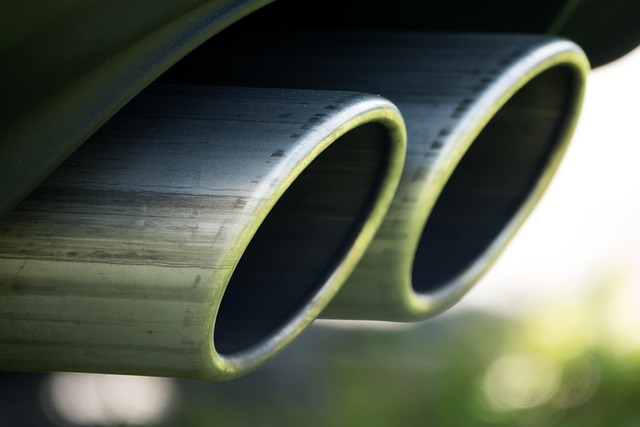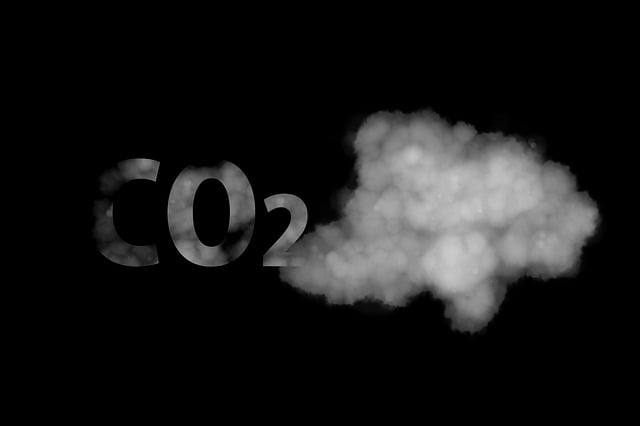Exhaust systems, comprising manifolds, converters, mufflers, and tailpipes, are essential for engine performance. 3D modeling facilitates customization for improved airflow, while industrial ventilation manages heat in hazardous areas. O2 and temperature sensors ensure optimal combustion. Upgrading exhaust systems demands understanding of vehicle-specific requirements like power output, gas flow, backpressure, and sound levels. Options include catback, full-system, performance, and custom setups, each with unique benefits. Proper installation is critical, requiring careful planning, correct tools, meticulous disassembly, and safety precautions to avoid mistakes. Regular maintenance and modernizing vintage exhausts enhance system longevity and driving experience while meeting environmental standards. Select Exhaust Systems offer significant advantages for improved power, torque, and fuel efficiency by minimizing backpressure.
Looking to upgrade your vehicle’s exhaust system? This comprehensive guide will walk you through everything you need to know. From understanding the basics of your car’s exhaust components and functionality, to navigating factors like material and design, we’ll help you select the perfect exhaust systems. We explore popular types—Catback, Full-System, and Performance options—and break down the installation process, offering tips to avoid common pitfalls. Discover the benefits of a high-performance system and learn essential maintenance practices for optimal performance.
- Understanding Your Vehicle's Exhaust System: Components and Basic Functionality
- Factors to Consider When Selecting an Exhaust System Upgrade
- Types of Exhaust Systems: Catback, Full-System, and Performance Exhaust Options
- Installation Process: Tools, Steps, and Common Pitfalls to Avoid
- Benefits and Maintenance Tips for Your New High-Performance Exhaust System
Understanding Your Vehicle's Exhaust System: Components and Basic Functionality

Every vehicle’s exhaust system is a complex network of parts designed to facilitate the expulsion of burnt gases and ensure optimal engine performance. At its core, the system consists of several critical components: the exhaust manifold, catalytic converter, muffler, and tailpipe. The exhaust manifold collects exhaust gases from the cylinders, directing them through the system. The catalytic converter reduces harmful emissions by facilitating chemical reactions that transform noxious gases into less toxic compounds. The muffler absorbs and muffles noise generated during the expulsion process, while the tailpipe serves as the final conduit for expelled exhaust gases.
When considering a new or upgraded exhaust system, it’s crucial to understand these components’ interactions. 3D modeling exhaust components allows for precise customization and optimization of airflow, potentially enhancing engine performance. Industrial exhaust ventilation solutions are also vital in managing heat and ensuring safe operating conditions, especially in environments with high particulate or gas exposure. Additionally, O2 sensors for exhaust and temperature sensors play a key role in monitoring the system’s efficiency and adjusting fuel injection to maintain optimal combustion.
Factors to Consider When Selecting an Exhaust System Upgrade

When selecting an exhaust system upgrade, several key factors come into play to ensure optimal performance and efficiency for your vehicle. The first consideration is understanding your vehicle’s specific needs. Different engines have varying requirements in terms of flow, backpressure, and sound levels. For instance, high-performance vehicles often require performance exhaust headers that can handle higher engine outputs while maintaining efficient gas flow. This ensures the engine performs at its best, enhancing overall driving experience.
Additionally, proper boat exhaust venting is critical for watercraft to prevent backpressure exhaust setup issues that could hinder speed and power. The layout of the exhaust system, including its length and diameter, should be tailored to direct gases effectively away from the engine bay while minimizing noise pollution, especially in areas with strict environmental regulations. With these considerations in mind, you’ll be well on your way to selecting an exhaust system that delivers both superior performance and reliability.
Types of Exhaust Systems: Catback, Full-System, and Performance Exhaust Options

When considering the installation of a powerful exhaust system, it’s crucial to understand the various options available. Among the most common types are catback, full-system, and performance exhaust systems, each with its own unique benefits and considerations. Catback systems, for instance, focus on improving flow by eliminating the stock muffler and catalytic converter, resulting in enhanced performance but requiring careful tuning to avoid excess backpressure, as tested by specialized tools like exhaust backpressure testers.
Full-system replacements offer a more comprehensive approach, swapping out not just the muffler and catalytic converter but also the pipes connecting them. This can significantly boost engine sound and overall performance, making it ideal for those seeking a more aggressive tuning. Custom exhaust systems take this a step further by allowing for precise tailoring to individual vehicles, offering unique designs that cater to specific driving styles and preferences. Alternatively, performance exhaust headers, known for their lightweight construction and optimized flow, enhance engine efficiency and power delivery, particularly in high-performance vehicles.
Installation Process: Tools, Steps, and Common Pitfalls to Avoid

The installation process for a powerful exhaust system involves several specialized tools and careful steps to ensure optimal performance and safety. Begin by selecting an exhaust system tailored to your vehicle’s make and model, focusing on options offering both enhanced flow and durability. Next, gather essential tools including jack stands, wrenches, sockets, and torques keys. Remove the old exhaust system meticulously, disposing of components responsibly. Ensure proper alignment and fitment of the new system, securing all parts securely with appropriate hardware.
Common pitfalls to avoid include incorrect torque settings, leading to leaks or damage, and neglecting safety precautions when working with heavy components. Neglecting computerized exhaust tuning can result in suboptimal performance, so consult your vehicle’s specifications and consider professional assistance for precise adjustments. Remember that a well-installed exhaust system not only improves engine sound but also contributes to overall vehicle efficiency and reduces harmful emissions, making it crucial to invest time and care into the process.
Benefits and Maintenance Tips for Your New High-Performance Exhaust System

A high-performance exhaust system offers numerous benefits to vehicle owners looking for enhanced engine power and improved driving experience. Not only do these systems increase horsepower and torque, but they also contribute to better fuel efficiency by reducing backpressure in the engine. Modern select exhaust systems come equipped with advanced materials that minimize noise levels while ensuring maximum flow, resulting in a smoother and more enjoyable drive.
Proper maintenance is key to keeping your high-performance exhaust system in top condition. Regular exhaust service should include checking for leaks, inspecting the muffler exhaust tips for damage or corrosion, and replacing any worn-out components. Modernizing vintage exhausts can also extend the lifespan of your system. Remember that a well-maintained exhaust system not only enhances performance but also reduces the risk of potential safety hazards associated with faulty emissions control devices.
When selecting an exhaust system upgrade, understanding your vehicle’s needs is key. By considering factors like performance requirements, budget, and maintenance preferences, you can choose between Catback, Full-System, or Performance options. The installation process involves specific tools and careful steps to avoid common pitfalls. Remember, a high-performance exhaust system not only enhances your vehicle’s sound and power but also requires regular maintenance for optimal longevity. Embrace the benefits and ensure a smooth, enjoyable driving experience.
